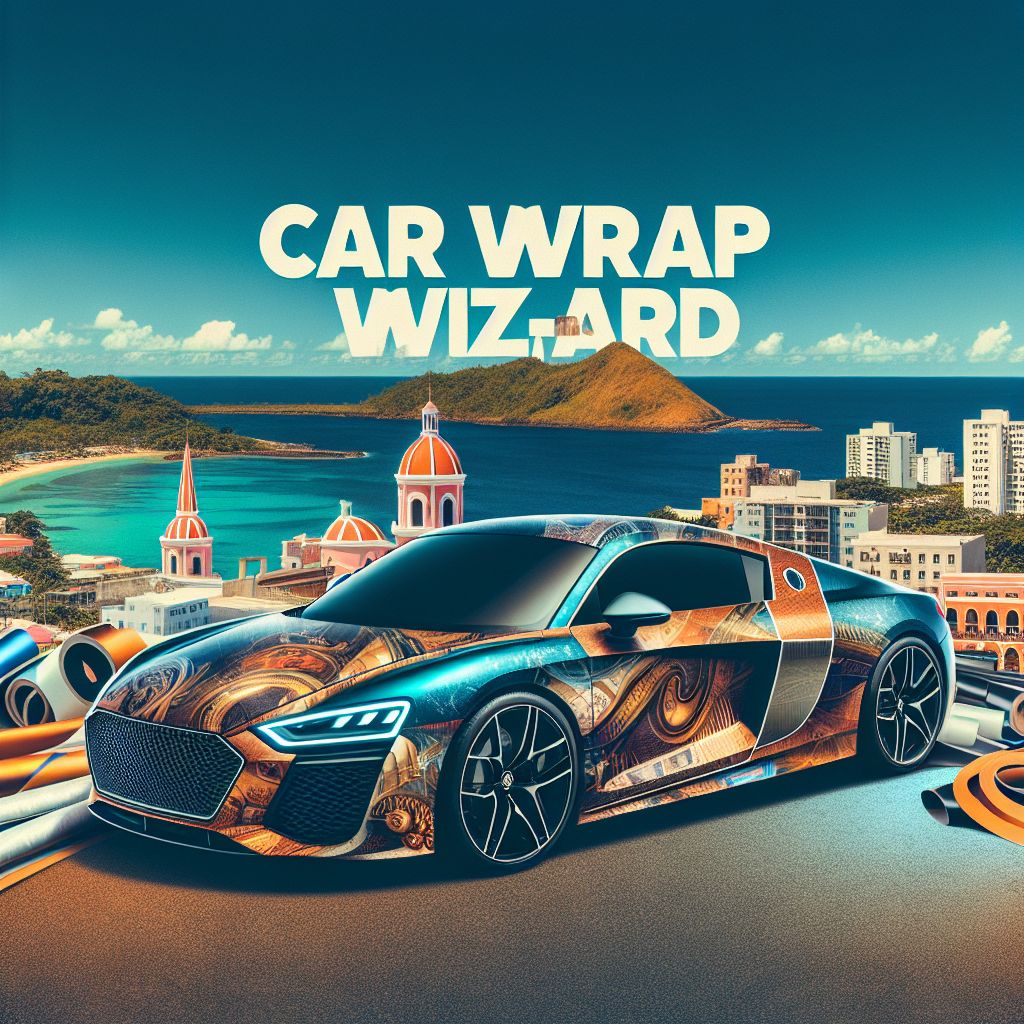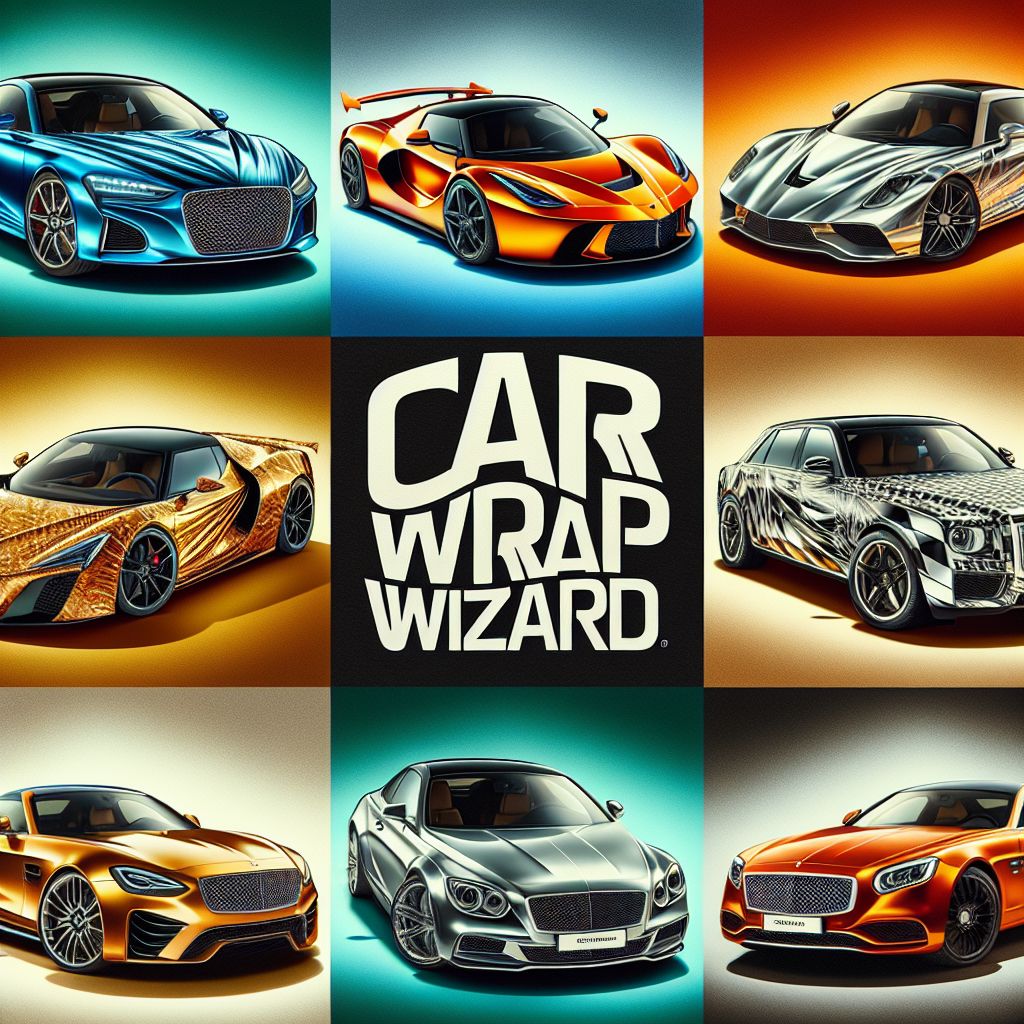
Key Takeaways
- In Puerto Rico, car wraps must comply with the Department of Transportation and Public Works (DTOP) regulations.
- Legal car wraps include full, partial, window tints within limits, and license plate wraps.
- It’s crucial to communicate with DTOP and update your vehicle’s registration to reflect your new wrap.
- Car wraps should not impede driver visibility and must adhere to safety and reflectivity standards.
- Maintaining your wrap in Puerto Rico’s climate involves regular cleaning and protecting it from the sun.
Understanding Car Wrap Regulations in Puerto Rico
For car enthusiasts in Puerto Rico, wrapping your vehicle is not just a statement of personal style but a move that requires careful adherence to specific regulations. Let’s dive into what you need to know to ensure your car’s new skin is not just eye-catching but also completely above board.
Comparative Overview: Puerto Rico vs. U.S. Mainland
While the essence of car wrapping regulations in Puerto Rico aligns with those in the mainland U.S., there are nuances to be aware of. The island’s Department of Transportation and Public Works (DTOP) sets forth guidelines that may differ slightly from what you’d find in states like California or New York. For instance, the allowed reflectivity of window tints or the extent of coverage on your vehicle might have local variations that you need to respect.
Decoding Types of Legal Car Wraps
So, what’s in the clear when it comes to wrapping your car in Puerto Rico? Here’s the breakdown:
- Full Wraps: Covering your entire vehicle with a new color or design is perfectly fine as long as you keep it non-reflective and report the change.
- Partial Wraps: Just want to add racing stripes or a cool graphic on the hood? Go for it, but remember that these too must be documented.
- Window Tints: Tinting is legal within certain visibility limits. Too dark, and you’ll run afoul of the law.
- License Plate Wraps: While customizing your plate is tempting, any wrap here must not obscure the numbers and letters.
Steering Clear of Illegal Wrap Pitfalls
Now, what’s not allowed? It’s simple: anything that’s reflective, obstructive, or offensive is a no-go. This includes mirror-like chrome finishes or wraps with graphics that could be considered violent or pornographic. Stay classy and stay legal.
Creativity Within the Rules: Designing Your Car Wrap
Just because there are rules doesn’t mean you can’t get creative. The key is to choose colors and designs that make your car pop without causing a stir for the wrong reasons. Think bold patterns, vivid colors, and unique graphics that reflect your personality and turn heads for all the right reasons.
Compliance and Approval Process in Puerto Rico
Getting your vehicle wrapped is exciting, but before you hit the streets, you’ve got some homework to do. The compliance and approval process is there to ensure that everyone stays safe and that your car’s new look doesn’t cause any confusion or problems.
First Step: Communicating with DTOP
Before you do anything else, get in touch with DTOP. They’ll give you the lowdown on what’s required and provide you with the necessary forms to fill out. It’s a bit of paperwork, but it’s the first step to hitting the road in style.
Documentation: What You Need to Register Your Wrap
Once you’ve settled on your design, you’ll need to update your vehicle registration. This means heading to your local DTOP office with:
- Your current vehicle registration
- A description of the wrap, including colors and coverage
- Proof of insurance
They’ll update their records, and you’ll be good to go.
Navigating Insurance and Car Wrap Coverage
Insurance is another key piece of the puzzle. Most insurance companies want to know when you make significant changes to your vehicle’s appearance. So, give them a call and fill them in on your wrap plans. It might affect your premium, but it’s better than finding out you’re not covered after the fact.
Ensuring Your Wrap Meets DTOP Standards: The Checklist
To make sure your wrap is up to snuff, here’s a quick checklist:
- Non-reflective material
- Does not obstruct visibility
- No offensive content
- Visibility through windows meets legal standards
- All vehicle features (like headlights and taillights) are fully functional and visible
If you can tick all these boxes, you’re on your way to a successful wrap that won’t land you in hot water.
Color & Graphics: Navigating DTOP Restrictions
When it comes to choosing the color and graphics for your car wrap, the sky’s the limit, right? Well, almost. The DTOP has a say in what’s acceptable. Your wrap must not resemble the colors or patterns used by emergency or government vehicles. This is to avoid any confusion on the road. So, while you can go wild with most colors, steer clear of those that might make your ride look like an official vehicle.
Wrapping Responsibly: Avoiding Offensive Content
Let’s talk about content because it’s not just the color that matters. In Puerto Rico, as in many places, wraps that feature offensive or explicit content are a definite no-no. The rule of thumb here is if it’s not something you’d want a kid to see, it’s probably not something you should put on your car. Keep it clean, keep it tasteful, and you’ll be in the clear.

Safety and Visibility Standards in Puerto Rico
Safety is paramount, and that’s why there are visibility standards in place for car wraps in Puerto Rico. The DTOP is quite clear: your wrap must not impede visibility. This means no super dark tints on the windows that would prevent you from seeing out, or others from seeing in, during both day and night.
Maximizing Safety: Ensuring Visibility with Your Wrap
Maximizing safety is a top priority, and that’s why ensuring visibility with your wrap is essential. Your wrap should enhance your car’s look without compromising safety. This means avoiding overly dark or reflective materials that can obscure your view or dazzle other drivers. Always opt for high-quality, non-reflective wrap materials that adhere to local laws and help you stay safe on the road.
The Science of Reflectivity in Wrap Materials
Reflectivity isn’t just about shine; it’s a science. Wrap materials are designed to meet specific standards that ensure they’re visible without being a distraction. Materials with a matte or satin finish are usually a safe bet, as they minimize glare and keep your vehicle visible to others without causing unwanted reflections.
Wrap Design and Access to Vehicle Features
Designing your wrap is where the fun really begins, but remember that all vehicle features must remain accessible and unobstructed. This includes your windows, mirrors, and lights. A well-designed wrap will complement these features, not cover them up. So, work with your installer to create a design that’s both stunning and smart.
Insurance and Coverage in Puerto Rico
Insurance is a critical aspect of car wrapping that you can’t afford to overlook. In Puerto Rico, your insurance company needs to be in the loop about your wrap. It’s not just a courtesy; it’s a requirement. Your wrap can affect your vehicle’s value and, potentially, your policy. So, a quick call to your insurer can save you a lot of hassle down the line.
Here’s what you need to discuss with your insurance provider:
- Inform them about the wrap before installation.
- Discuss any changes in the car’s value due to the wrap.
- Ensure your policy covers customizations.
- Confirm that your wrap doesn’t void any aspect of your coverage.
Remember, staying transparent with your insurer is just as important as complying with DTOP regulations.
Aligning Wrap Coverage with Puerto Rico’s Climate
When you’re choosing a wrap, consider Puerto Rico’s tropical climate. The sun can be brutal, and salt air is corrosive. Your wrap needs to withstand these conditions without fading or peeling. Discuss with your installer about the best materials for longevity and make sure your insurance covers any climate-related damages.
Legally Required Disclosures for Wrap Insurance
Legally, you’re required to disclose any significant changes to your vehicle’s appearance to your insurance company. This isn’t just bureaucratic red tape; it’s about ensuring that your policy accurately reflects your vehicle’s condition. If you skip this step and need to file a claim, you might find yourself in a sticky situation if the insurer wasn’t aware of the wrap.
DTOP-Compliant Liability Protections for Your Vehicle
Aside from the aesthetic and practical considerations, your wrap also needs to meet liability protections as per DTOP compliance. This means your wrap should not mislead or misrepresent your vehicle in any way that could lead to legal issues. For instance, if your wrap is advertising a service, it must be clear that it’s an ad and not an official vehicle of any kind.
Summary of Puerto Rico DTOP Rules:
| Topic | Description | Source |
|---|---|---|
| Car Wrap Types Allowed | Includes full, partial, window tints, and license plate wraps | 1, 3 |
| Compliance Process | Involves notifying DTOP, updating registration, and ensuring insurance coverage compliance | 1, 3 |
| Legal Considerations | Covers state and local laws, permit requirements, color restrictions, and offensive content | 3 |
| Safety Standards | Ensures wraps do not obstruct view, meet reflectivity requirements, and allow access to features | 1, 3 |
| Insurance Coverage | Considers policy implications, disclosure obligations, and liability protections | 3 |
References: HEXIS Graphics, FasterCapital, 3M Vehicle Graphics Care
Cost and Maintenance in Puerto Rico
Let’s talk numbers. Wrapping your car isn’t a small investment, so you want to make sure you get it right. Costs can vary widely based on the size of your vehicle and the complexity of the wrap. On average, you might be looking at anywhere from a few hundred to a couple of thousand dollars.
Here’s a more detailed breakdown:
- A full wrap for a standard car can range from $1,500 to $3,500.
- Partial wraps or just the hood or roof might set you back $200 to $800.
- High-quality, durable materials may cost more upfront but can save you money in the long run.
Remember, you’re investing in both the look and protection of your vehicle, so it’s worth considering the best option you can afford.
Breaking Down Car Wrap Costs
The cost of wrapping your car in Puerto Rico can vary, but here’s what you can expect:
- Material Quality: Higher-quality wraps have better color depth and durability, which can affect cost.
- Design Complexity: Custom designs are more labor-intensive and can increase the price.
- Vehicle Size: Larger vehicles require more material and time, leading to higher costs.
It’s essential to get quotes from several reputable installers to ensure you’re getting a fair deal for the quality of work you’re seeking.
Maintenance 101: Protecting Your Wrap Investment
Maintaining your wrap is just as important as the initial installation. Regular cleaning and inspections will keep your wrap looking sharp and can extend its life. Use gentle cleaning solutions and avoid high-pressure washes that can lift the edges of your wrap. And remember, if you spot any damage, it’s best to address it quickly to prevent further issues.
Weather Adaptations for Wrap Longevity
Puerto Rico’s climate can be tough on vehicle wraps. The intense sun and salty air can lead to fading and deterioration if you’re not careful. To combat this, make sure you choose UV-resistant wrap materials and consider ceramic coatings for added protection. Parking in the shade or using a car cover can also go a long way in preserving your wrap’s vibrant colors.
Best Practices for Car Wraps in Puerto Rico
Best practices are the golden rules of car wrapping. They are the guidelines that will ensure your wrap not only looks fantastic but also stands the test of time. Follow these, and you’ll be on the right track to a successful and stunning vehicle transformation.
Selecting the Right Wrap Installer
The installer you choose can make or break your wrap experience. Look for a professional with a strong portfolio, positive customer reviews, and a willingness to discuss your vision in detail. They should be knowledgeable about DTOP regulations and offer a warranty for their work. A good installer will ensure your wrap is applied correctly and legally, giving you peace of mind.
Upkeep Tips: Maintaining Your Car’s Aesthetic
Your car’s wrap is like its skin, and it needs care to stay looking its best. Regularly wash your car with soap designed for wraps, and quickly remove any stains or spills. Avoid abrasive tools and waxes that can damage the wrap. A little bit of TLC will keep your car’s wrap looking fresh and new for years to come.
Wrap Removal: Keeping It Clean and Pristine
When it’s time to say goodbye to your wrap, removal should be done with care. A professional installer can remove the wrap without damaging the paint beneath. If you’re attempting to remove it yourself, heat the wrap gently to loosen the adhesive and pull slowly to avoid residue. After removal, a thorough wash and wax will restore your car’s original look.
If you’re considering selling your vehicle, remember that a well-maintained wrap can preserve the paint, potentially increasing the car’s resale value. On the flip side, a poorly maintained or damaged wrap can detract from its worth. Keep this in mind as you care for your wrap.

Frequently Asked Questions (FAQ)
Can I Wrap My Car with Any Design?
While you have creative freedom with your car wrap design, it must comply with DTOP regulations. This means avoiding designs that mimic emergency vehicles, contain offensive content, or obstruct visibility. Within these guidelines, you can choose virtually any design that expresses your style.
Do I Need to Update Vehicle Registration After Wrapping?
Yes, in Puerto Rico, you must update your vehicle registration after getting a wrap. This helps ensure that your car’s appearance on record matches its actual look, which is important for identification purposes and compliance with DTOP rules.
What Happens If My Wrap Doesn’t Meet DTOP Standards?
If your wrap doesn’t meet DTOP standards, you may be subject to fines or be required to remove the wrap. To avoid this, double-check the regulations before installation and work with a reputable installer who understands the local laws.
How Does a Car Wrap Affect Insurance?
A car wrap can affect your insurance in a couple of ways. It may increase the value of your car, potentially altering your premium. Additionally, if you fail to inform your insurance company about the wrap, it could affect your coverage in the event of a claim. Always notify your insurer before making significant changes to your vehicle’s appearance.
Are There Specific Maintenance Products for Car Wraps?
Yes, there are cleaning and maintenance products specifically designed for car wraps. These products are formulated to clean without damaging the vinyl and can help protect the wrap from the elements. Look for wrap care products at automotive stores or ask your installer for recommendations.
By following these guidelines and best practices, you can enjoy a stunning car wrap that reflects your unique style while staying within the legal framework of Puerto Rico’s DTOP regulations. With the right care and attention, your wrapped car will be turning heads on the roads for years to come.
When considering a vinyl car wrap in Puerto Rico, it’s important to understand the Department of Transportation and Public Works (DTOP) regulations, insurance implications, and legal compliance to ensure your vehicle meets all necessary requirements and avoids potential fines.




